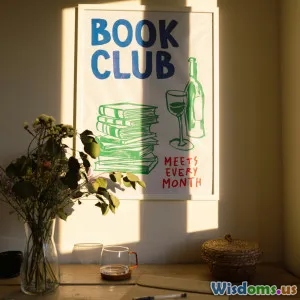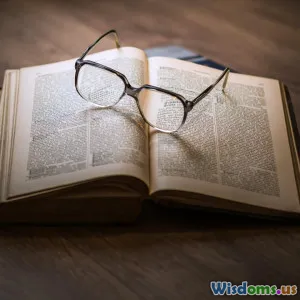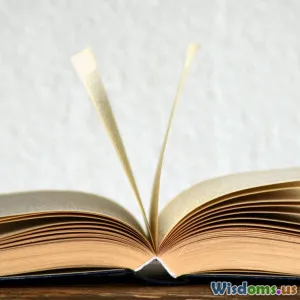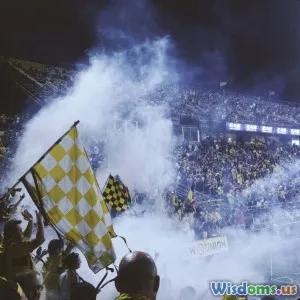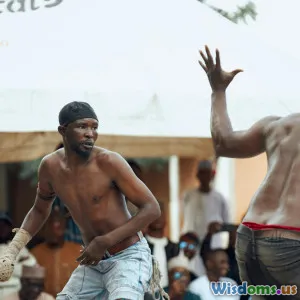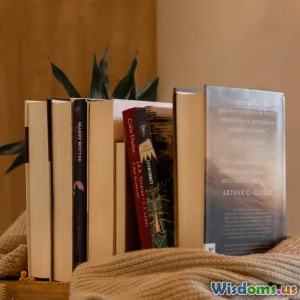
The Evolution of Literary Genres
7 min read Explore how literary genres evolved, shaping storytelling across centuries and reflecting cultural shifts. (0 Reviews)
The Evolution of Literary Genres
Literary genres are the lenses through which stories are told, shaping both the form and the substance of literature. But how did these genres come to be, and how have they evolved throughout history? This journey through the evolution of literary genres reveals more than just changing tastes—it exposes shifting cultural values, technological advances, and the dynamic nature of human expression.
Introduction: The Pulse of Storytelling
Every culture tells stories, but the ways those stories are categorized and structured evolve over time. From the oral epics of ancient times to the sprawling digital narratives of today, genres adapt as societies change. Understanding this evolution deepens our appreciation of literature and offers insight into the human experience itself.
Origins of Literary Genres: Foundations of Storytelling
The Epic and Oral Traditions
The earliest known literary works lack strict genre definitions but were primarily oral transitions—epics such as Homer’s Iliad and Odyssey exemplify this. These lengthy, poetic narratives served societal functions: preserving history, instilling moral values, and uniting communities.
Why did epics endure? Their formulaic structure—repetitive phrases and fixed motifs—aided memorization in pre-literate societies. The enduring influence of epics is seen today in genres like fantasy, which borrow their grand scale and heroic archetypes.
Emergence of Drama and Lyric Poetry
Ancient Greece gave rise to dramatic genres—tragedy and comedy—that intricately explored human nature and society. Sophocles and Aristophanes, for example, exposed audiences to intense emotional and societal conflicts.
Simultaneously, lyric poetry, marked by personal emotion and brevity, flourished. The genres began to reflect the complementarity of communal and individual experience—a dichotomy modern literature continues to explore.
The Middle Ages to Renaissance: Diversification and Codification
Romance and Allegory
During the Middle Ages, the chivalric romance flourished, blending adventure with courtly love, as seen in Sir Gawain and the Green Knight. These narratives solidified genre conventions involving heroism and morality.
Allegorical works like Dante’s Divine Comedy combined spirituality with narrative, advancing the role of genre as a conveyer of complex human philosophies.
The Birth of the Novel
The Renaissance, coupled with the invention of the printing press, revolutionized literary production. The novel—a genre that blurred boundaries—emerged to capture realism and individual psychology. Cervantes’ Don Quixote (published in 1605) is often cited as the first modern novel, parodying older chivalric tales and reflecting on the nature of reality.
18th to 19th Century: Genre Expansion and Experimentation
Naturalism, Realism, and Gothic Literature
The Enlightenment’s focus on reason led to realism and naturalism, genres that portrayed life objectively. Writers like Gustave Flaubert in Madame Bovary explored social conditions and internal psychology with unprecedented detail.
Conversely, Gothic literature, with works like Mary Shelley’s Frankenstein, embraced the supernatural and emotional extremes, foreshadowing horror and speculative fiction.
The Rise of the Short Story and Poetry Movements
The 19th century also highlighted the rise of the short story—a concentrated narrative form epitomized by Edgar Allan Poe and Anton Chekhov. Poetry diversified, too, with Romanticism emphasizing emotion and Modernism breaking traditional structures.
20th Century: Genre Blending and the Rise of New Forms
Modernism and Postmodernism
Modernist writers like James Joyce and Virginia Woolf experimented with stream of consciousness and fragmented narratives, challenging classic genre boundaries. The rigid separation between genres softened as prose, poetry, and drama cross-pollinated.
Postmodern literature further fragmented genres by mixing irony, metafiction, and pastiche, highlighting the artificiality of storytelling itself. Thomas Pynchon’s Gravity’s Rainbow exemplifies this intricate genre collage.
Genre Fiction Ascendance
The 20th century saw speculative fiction, mystery, romance, and thriller genres solidify with mass appeal. Science fiction, pioneered by H.G. Wells and later authors like Isaac Asimov, explored scientific possibilities and social implications, massively influencing popular culture.
The Digital Age: New Horizons for Genres
Interactive and Hypertext Narratives
Digital technology has fostered new narrative forms: hypertext fiction, video game storytelling, and interactive novels dissolve linear constraints and invite reader participation. This unprecedented level of engagement challenges traditional genre definitions.
Cross-Genre and Multimedia Works
The blending of text, images, and sound—seen in graphic novels or multimedia e-books—reflects a post-genre era where boundaries are fluid. Neil Gaiman's The Sandman series, a graphic novel blending mythology, horror, and fantasy, exemplifies this hybridity.
Conclusion: Why Understanding Genre Evolution Matters
Genres are not static pigeonholes but living frameworks reflecting human culture, technology, and thought. From ancient epics to digital narratives, each evolution enriches storytelling’s potential and invites us to reconsider what literature can be.
Recognizing this progression encourages readers to appreciate diverse forms and inspires writers to innovate boldly. Ultimately, the history of literary genres proves that stories evolve as dynamically as the societies that tell them.
References
- Frye, Northrop. Anatomy of Criticism. Princeton University Press, 1957.
- Eco, Umberto. The Role of the Reader. Indiana University Press, 1979.
- Punday, Daniel. Narrative Worlds, Real People. Cambridge University Press, 2010.
Published: 2024
Rate the Post
User Reviews
Popular Posts










